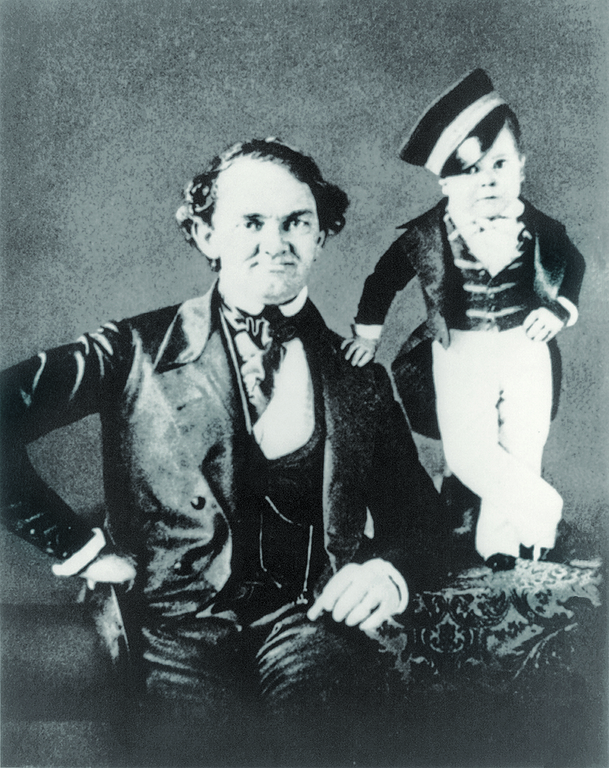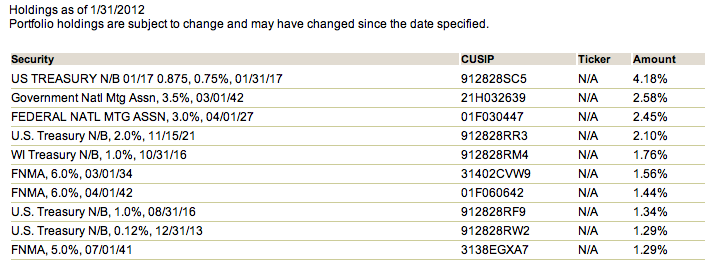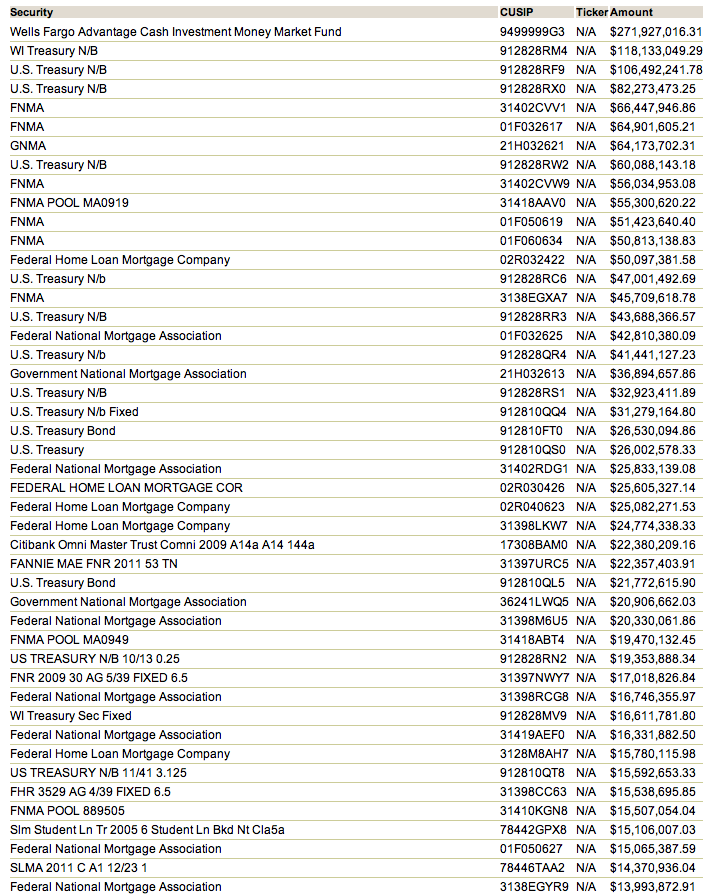While planning for a long trip to Costa Rica this winter, your humble blogger needed a way to entertain himself in a land where the nearest bar showing NFL games is a dirt road and a ferry ride away. Fortunately there exists the Kindle Store, where you can not only buy the Greatest Personal Finance Book Ever Written for next to nothing, you can get dozens and dozens of classics free. Almost anything that’s out of copyright, Amazon makes available. Within minutes the complete works of Mark Twain, Middlemarch, The Wealth of Nations, Ulysses, The Man Who Would Be King, The Iliad, War & Peace, The Count of Monte Cristo and dozens of others found their way onto the Kindle, so many books that they left barely 96% of its storage available.
The last book downloaded was an afterthought, and like many an afterthought, has inspired something of substance. That book is Art of Money Getting or, Golden Rules for Making Money by Phineas Taylor Barnum.
Here’s everything we knew about Barnum before buying the book:
- founded a circus that, via a couple of mergers, still exists a century and a half later
- introduced Tom Thumb to the world
- said “There’s a sucker born every minute.” It turns out that Barnum never actually said that, which doesn’t matter because his verifiable quotes are far more profound.
Barnum wrote Art of Money Getting at 70, which was only 9 years after he founded his circus. Barnum spent the first 2/3 of his adult life building theaters and producing shows.
Art of Money Getting is short at 128 pages (if pages are still the measurement you use for book length. It’s 504 Kindle locations long.) But its ideas resonate way out of proportion to its length. Right out of the gate, in fact. The opening line:
In the United States, where we have more land than people, it is not at all difficult for persons in good health to make money.
Barnum wrote this in 1880. The nation had 50 million people spread over 39 states. The first electric streetlight was installed that year. Ohio congressman James Garfield won the presidential election by 1,898 votes, catching a bullet for his troubles a few months later. Helen Keller checked in, as did the University of Southern California.
The road to wealth…consists simply in expending less than we earn; that seems to be a very simple problem.
(Bolding and italicizing ours.)
Barnum quotes Charles Dickens’s Mr. Micawber, who said that if you make £20 a year and spend £19/6, you’ll be “the happiest of mortals”. Spend £20/6, and you’ll be “the most miserable of men.”
One look at the Occupy Wall Street protestors, United States senators and congressmen who spend your money, indebted graduate students, degenerate lottery players*, underwater adjustable-rate mortgage holders walking away from their homes instead of honoring their obligations and clueless personal finance bloggers who carry 5-digit credit card balances yet can’t wait to plan their honeymoons might lead you to believe that you can indeed spend more than you earn and still be happy. Barnum knew that that kind of “happiness” is riddled with more holes than a Lindsay Lohan alibi.
More cases of failure arise from mistakes on this point than almost any other…many people think they understand economy when they really do not.
One says, “I have an income of so much, and here is my neighbor who has the same; yet every year he gets something ahead and I fall short; why is it?”
Barnum’s question was rhetorical, and even back then the concept of living within your means struck many people as somehow boring or square. Other people never reached beyond a pedant’s understanding of economizing:
There are men who think that economy consists in saving cheese-parings and candle-ends, in cutting off 2d. from the laundress’ bill and doing all sorts of little, mean, dirty things.
Does this sound like anyone familiar? Seriously, does it? Anybody?
This class of persons let their economy apply in only one direction. They fancy they are so wonderfully economical in saving a half-penny where they ought to spend twopence.
Barnum illustrates this with a tale of a woman who rents out her house to overnight guests. When one complains that it’s hard to read late at night, she explains how she can only afford extra candles for special occasions. The money she’d make by spending a few bucks and having happy repeat customers
would, of course, far outweigh a ton of candles.
Her parsimony then reveals its true colors. It’s not about being cheap because of poverty, it’s about being cheap because:
Feeling that she is so economical in tallow candles, she thinks she can afford to go frequently to the village and spend $20 or $30 for ribbons and furbelows.
If that’s not an admonishment to “buy assets/sell liabilities”, we don’t know what is.
(A furbelow, by the way, is not a Mediterranean woman. [Sorry. That was truly, truly horrible.] It’s a ruffle on a dress.)
Quoting Ben Franklin, Barnum writes:
“They are like the man who bought a 1¢ herring for his family’s dinner and then hired a coach-and-four to take it home.” I never knew a man to succeed by practicing this
Contemporizing things, you can buy a 1¢ herring at Ross Dress for Less. You can buy a coach-and-four at your local university’s graduate school.
Barnum adds that if you want to build wealth, don’t make it hard on yourself.
Unless a man enters upon the vocation intended for him by nature, and best suited to his peculiar genius, he cannot succeed.
What Barnum’s saying is simple. Don’t go to college out of obligation and then get an English degree because it’s the easiest one to obtain once you’re there. If you love sea kayaking that much, stop kidding yourself and become a tour guide. After a while, for less than the price of that college education, you can lease a storefront, buy a business license; advertising; and enough paddles, kayaks, helmets, life vests and tiedowns to keep your clients happy and yourself profitable and self-actualized.
Or you could just spend money on junk. And it doesn’t matter whether that junk is toys you have to finance, or an education that the marketplace offers no sufficient reward for:
There is scarcely anything that drags a person down like debt…
Debt robs a man of his self-respect, and makes him almost despise himself.
Barnum didn’t understand wasting money, but he did understand leverage:
I do not speak of merchants…who buy on credit in order to turn the purchase to a profit.
There’s another exception, too:
(quoting an underidentified “Mr. Beecher”) “Get in debt to a small amount in the purchase of land…safe to a limited extent, but getting in debt for what you eat and drink and wear is to be avoided.”
Barnum couldn’t stress it enough. If you’re dumb enough to have gotten into debt in the first place, live like a stowaway on a freighter bound for Cape Town before you incur any more debt. Sorry, but you get to neither eat your cake nor have it. That’s for people in the black.
Money…is a very excellent servant but a terrible master…It works night and day, and in wet or dry weather.
Do not let it work against you; if you do there is no chance for success in life
Also, don’t be an idiot. We don’t make it a habit of quoting Mohammed on this site, but Barnum references him, too. Camping in the desert, one of his tired followers said, “Screw this. I’m going to loosen my camel, and trust in God.” (Paraphrasing.) Mohammed came back with, “No, tie your camel and trust in God.”
Barnum explains how most quitting is done early. Perseverance isn’t easy, but it’s a lot easier than failure. And perseverance engenders momentum. Take the case of John Jacob Astor, whose fortune in constant dollars dwarfed what Bill Gates and Warren Buffett are worth today:
It was more difficult for him to accumulate his first thousand dollars than all the succeeding millions
Donald Trump’s first apartment building, Ted Turner’s first acre of ranchland, Timbaland’s first hit song…none of them were especially noteworthy at the time, but they each represented a milestone. Because going from 1 quantifiable accomplishment to 2 means merely doubling your success. Going from 0 to 1 means increasing your success infinitely. The first step really is the hardest, which is why most people never take it.
Which might be a singularly American concept. Upon visiting the United Kingdom, Barnum was shocked at the concept and understanding of class, and couldn’t wait to get back home:
In this Republican country, the man makes the business. No matter whether he is a blacksmith, a shoemaker, a farmer, banker or lawyer…he may be a gentleman.
By “gentleman” Barnum doesn’t necessarily mean a guy who holds doors open for women and puts his hand to his mouth when yawning. He means a man of affluence, or at least comfort. In the U.K., comfort didn’t come without a pedigree.
We leave you with this, as apt a comparison of richness and poverty as any:
The poor spendthrift vagabond says to a rich man:
“I have discovered there is enough money in the world for all of us, if it was equally divided; this must be done, and we shall all be happy together.”
“But,” was the response, “if everybody was like you, it would be spent in two months, and what would you do then?”
“Oh! divide again; keep dividing, of course.”
*”I don’t really ‘play’ the lottery, I just buy tickets once in a while. Besides, it’s just fun!”
This article is featured in:









